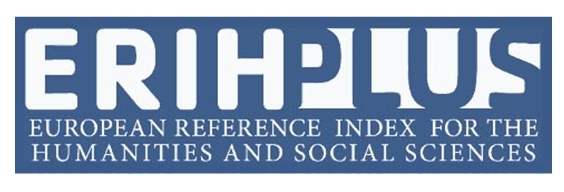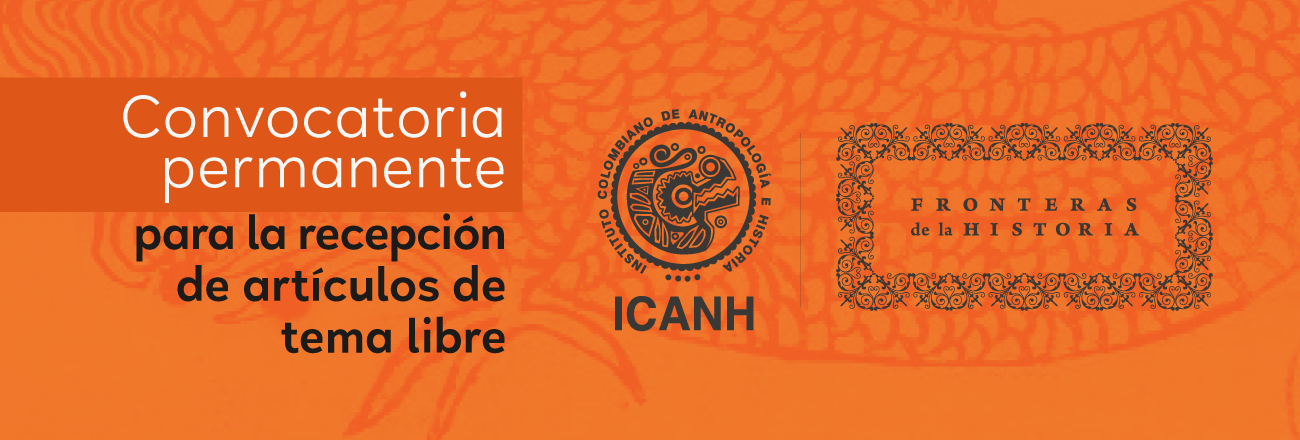Pelayo of Oviedo and its historical-geographical compilation: the Corpus Pelagianum of manuscript 1513 of the National Library of Spain
Abstract
Pelayo, bishop of Oviedo during the first half of the 12th century, is the author of a compilation, known as Corpus pelagianum, which brings together a large number of historical and legal texts. It has been preserved in several versions. The manuscript 1513 of the National Library of Spain is the best exponent of the so-called Compilation B and it has the feature of offering abundant geographic material: an outline with the people of the world, lists of provinces, description of cities, wind diagrams, etc. This article classifies and analyses the geographical units of the Corpus as found in manuscript 1513, interpreting them both in their literary context (within the manuscript) and in their historical context (the conditions of production of the Corpus). The analysis shows the use of geographic knowledge in the construction of a specific discourse created by Bishop Pelayo, useful to his interests of acquiring and preserving privileges for his See in the changing scenario of the Reconquista.
Downloads
References
Alonso Álvarez, R. (2011): “El Corpus Pelagianum y el Liber Testamentorum Ecclesiae Ouetensis: las “reliquias del pasado” de la catedral de Oviedo y su uso propagandístico en la obra del obispo Pelayo de Oviedo (1101-1153), en M. F. Alamichel y R. Braid, eds., Texte et Contexte. Littérature et histoire de l’Europe médiévale, Paris, Michel Houdiard Éditeur, pp. 519-548.
Alonso Álvarez, R. (2012): “La obra histórica del obispo Pelayo de Oviedo (1089-1153) y su relación con la Historia legionensis (llamada silensis)”, e-Spania [En línea], 14, consultado el 28 abril 2017, URL: http://e-spania.revues.org/21586, DOI: 10.4000/e-spania.21586.
Aurell, J. et al. (2013): Comprender el pasado. Una historia de la escritura y el pensamiento histórico, Madrid, Akal.
Barton, S. y R. Fletcher (2000): The World of the Cid. Chronicles of the Spanish Reconquest, Manchester-New York, Manchester University Press.
Bautista, F. (2011): “Historiografía e invención: Wamba en el Libro de las generaciones”, Edad Media: Revista de Historia, 12, pp. 67-97.
Calleja Puerta, M. (2010): “Eclesiología episcopal y organización del espacio en las ciudades y villas del noroeste peninsular (1100-1250)”, en J. I. de la Iglesia Duarte, ed., Monasterios, espacio y sociedad en la España cristiana medieval, Logroño, Instituto de Estudios Riojanos, pp. 429-490.
Campopiano, M. (2008): Liber Guidonis compositus de variis historiis. Studio ed edizione critica dei testi inediti, Firenze, Edizioni del Galluzzo.
Casariego, J. E. (1985): Crónicas de los reinos de Asturias y León, León, Editorial Everest.
Cirot, G. (1919): “ A propos d’une édition récente de la Chronique d’Alphonse III”, Bulletin Hispanique, 21, pp. 1-8.
Duart, L. (1961): Obispados godos de Levante, Madrid, Morata.
Estévez Sola, J. A. (2001): “Un texto de Pelayo y Lucas de Tuy”, Habis, 32, pp. 617-620.
Fernández Conde, F. J. (1972): La iglesia de Asturias en la Alta Edad Media, Oviedo, Instituto de Estudios Asturianos (Diputación de Oviedo).
Fernández Conde, F. J. (2003): “Espacio y tiempo en la construcción ideológica de Pelayo de Oviedo”, Annexes des Cahiers de linguistique et de civilisation hispaniques médiévales, 15, pp. 129-148.
Fernández Conde, F. J. (2005): La religiosidad medieval en España. Plena Edad Media (ss. XI-XIII), Madrid, Trea.
Fischer, C. B. (1966): “The Pisan Clergy and an Awakening of Historical Interest in a Medieval Commune”, Studies in Medieval and Renaissance History, 3, pp. 141-219.
Galván, F. (1997): “El ms. 1513 de la biblioteca nacional de Madrid: Primeros pasos en la miniatura gótica hispana”, Anuario de Estudios Medievales, 27, pp. 479-497.
Gautier-Dalché, P. (2008): “L’héritage antique de la cartographie médiévale: les problèmes et les acquis”, en R.J.A. Talbert et R.W. Unger, eds., Cartography in the Antiquity and the Middle Ages. Fresh Perspectives, New Methods, Leiden-Boston, Brill, pp. 29-66.
Gautier-Dalché, P. (2015): “Maps, Travel and Exploration in the Middle Ages: Some Reflections about Anachronism”, The Historical Review / La Revue Historique, 12, pp. 143-162.
Gil Fernández et al., (1985): Crónicas asturianas. Crónica de Alfonso III (Rotense y «A sebastián»). Crónica Albeldense (y «Profética»), Oviedo, Universidad de Oviedo (Servicio de Publicaciones).
Gloël, M. (2017): “The Tubal Figure in Early Modern Iberian Historiography, 16th and 17th Century”, Imago Temporis. Medium Aevum, 11, pp. 27-51.
Gouguenheim, S. (2010): La réforme grégorienne. De la lutte pour le sacré à la sécularisation du monde, Paris, Temps Présent.
Hiatt, A. (2015): “Worlds in books”, en E. Steiner y L. Ransom, eds., Taxonomies of Knowledge. Information and Order in Medieval Manuscripts, Philadelphia, University of Pennsylvania Press, pp. 37-55.
Hofmeister, A. (1912): Ottonis episcopi Frisingensis Chronica sive Historia de duabus civitatibus, Hannover y Leipzig, MGH, SS rer. Germ., 45.
Jerez, E. (2008): “Arte compilatoria pelagiana: la formación del Liber cronicorum”, en A. Arizaleta, ed., Poétique de la chronique. L’écriture des textes historiographiques au Moyen Âge (péninsule Ibérique et France), Toulouse, CNRS - Université de Toulouse-Le Mirail, pp. 47-87.
Lake, J. (2015): “Current Approaches to Medieval Historiography”, History Compass, 13/3, pp. 89-109, DOI: 10.1111/hic3.12222.
Loring García, M. I. (2001): “Sistemas de parentesco y estructuras familiares en la edad Media”, en J. I. de la Iglesia Duarte, ed., La familia en la Edad Media: XI Semana de Estudios Medievales, Nájera, del 31 de julio al 4 de agosto de 2000, Logroño, Instituto de Estudios Riojanos, pp. 13-38.
Martín López, M. E. (2011): “La reconstrucción de documentos a través de documentos”, en Universidad de Oviedo (Instituto de Estudios Medievales), ed., Iglesia y ciudad. Espacio y poder (siglos VIII-XIII), Oviedo, Ediciones de la Universidad de Oviedo, pp. 43-66.
Martín Martín, J. L. (2013): “Tiempos de conflicto en el siglo XII: disputas por el poder, por la riqueza y celos profesionales entre monasterios y obispos”, en J. A. García de Cortázar y R. Teja, eds., Monjes y obispos en la España del románico: entre la convivencia y el conflicto, Aguilar de Campoo, Fundación Santa María la Real, pp. 84-113.
Mestre, A. (2000): Historia, fueros y actitudes políticas: Mayans y la historiografía del XVIII, Valencia, Universitat de València.
Mitre, E. (2013): Ciudades medievales europeas. Entre lo real y lo ideal, Madrid, Cátedra.
Mommsen, Th. (1894): Chronica minora saec. IV. V. VI. VII. (II), Berlín, MGH, Auct. Ant., 11.
Obrist, B. (1997): “Wind Diagrams and Medieval Cosmology”, Speculum, 72 (1), pp. 33-84.
Orcástegui C. y E. Sarasa (1991): La historia en la Edad Media. Historiografía e historiadores en Europa Occidental: siglos V-XIII, Madrid, Cátedra.
Oroz Reta, J. y M. A. Marcos Casquero (1993): Etimologías, Madrid, BAC.
Rodríguez Alonso, C. (1975): Las historias de los Godos, Vándalos y Suevos de Isidoro de Sevilla Cristóbal Rodríguez Alonso, León, Centro de estudios e investigación San Isidoro.
Rubio Tovar, J. (2008): “Geografía, teología e historia: algunas consideraciones sobre los mapas medievales”, Letras, 57-58, disponible en: http://bibliotecadigital.uca.edu.ar/repositorio/revistas/geografia-teologia-historiamapas-medievales.pdf, pp. 163-177.
Ruiz de la Peña, J. I. y Beltrán S. (2011): “Señoríos compartidos, señoríos conflictivos. Los obispos y el Concejo de Oviedo en la Edad Media”, en Universidad de Oviedo (Instituto de Estudios Medievales), ed., Iglesia y ciudad. Espacio y poder (siglos VIII-XIII), Oviedo, Ediciones de la Universidad de Oviedo, pp. 137-177.
Sánchez Pardo, J. C. (2014): “Organización eclesiástica y social en la Galicia tardoantigua. Una perspectiva geográfico-arqueológica del parroquial suevo”, Hispania Sacra, 66 (134), pp. 439-480.
Stancati, T. (2010): Julian of Toledo Prognosticum Futuri Saeculi. Foreknowledge of the World to come, New York, Paulist Press.
Valdés Gallego, J. A. (2000): El Liber Testamentorum Ovetensis. Estudio filológico y edición, Oviedo, Real Instituto de Estudios Asturianos.
Vázquez de Parga, L. (1943): La división de Wamba: Contribución al estudio de la historia y geografía eclesiásticas de la edad media española, Madrid, Sucesores de Rivadeneyra.
von den Brincken, A. D. (2006): “Jerusalem on medieval mappaemundi: a site both historical and eschatological”, en P. D. A. Harvey, ed., The Hereford World Map: Medieval World Maps and their Context, London, British Museum Library, pp. 355-379.
Ward, J. O. (2000): “The Monastic Historiographical Impulse c. 1000-1260. A Re-Assessment”, en T. M. S. Lehtonen y P. Mehtonen, eds., Historia. The Concept and Genres in the Middle Ages, Helsinki, The Finnish Society of Sciences and Letters, pp. 71-100.

Esta obra está bajo licencia internacional Creative Commons Reconocimiento-NoComercial-CompartirIgual 4.0.









_18.09_.00_1.png)


















